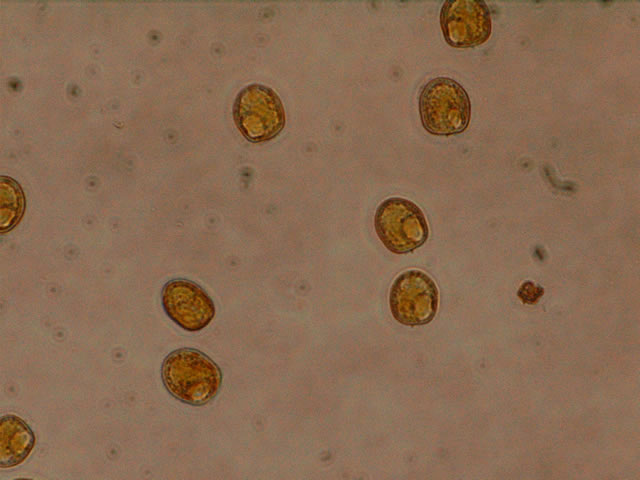|
|
Maryland Department of Natural Resources (DNR) identified Mahogany Tide caused by the dinoflagellate plankton Prorocentrum minimum in the lower Severn River on November 28, 2006 at 11,430 cells per milliliter. Maryland Department of the Environment (MDE) has since responded to color complaints and has further identified Mahogany Tide in the region in late December 2006 (12/21/07 Magothy River: 132,000 cells per milliliter) and the first week of January 2007 (1/3/07 Severn River and Back Creek (Annapolis): 61,800 and 56,000 cells per milliliter respectively. Sharyn Hedrick of the Smithsonian Environmental Research Center (SERC) further reported Prorocentrum minimum at 114,000 cells per milliliter on the lower Severn River collected on January 19, 2007, suggesting the probable persistence of the bloom in this region since late autumn. Additional citizen inquiries regarding discolored water during the first week of January were derived from the South and West Rivers suggesting extensive Mahogany Tide bloom waters have been present in Anne Arundel County at the start of the New Year. We define Mahogany Tide blooms with Prorocentrum minimum microscope counts greater than 3000 cells per milliliter. DNR detects Prorocentrum in water samples throughout the year but blooms in our region generally occur at water temperatures between 12 and 28°C (54-82°F ) and salinity between 4.5 and 12.8 ppt. Such blooms are most commonly detected in April and May during sampling for the Chesapeake Bay Long-term Water Quality Monitoring Program with occasional bloom levels measured in summer and rarely in early fall. Field investigations, however, of color complaints, fish kills, crab jubilees (crabs leaving the water escaping poor water quality conditions) and algae blooms in near-shore zones and tributary embayments have identified Prorocentrum blooms with greater than 100,000 cells per milliliter in all seasons.
Prorocentrum minimum cells showing unusual internal organelles (round structures within the cells) with an unknown function. Photo by Sharyn Hedrick (SERC). Late fall and early winter blooms are atypical but not unprecedented having occurred historically in such western shore locations as Breton Bay , Potomac River (110,800 cells per milliliter on 11/10/03 ), Bear Creek-Patapsco River (117,072 cells per milliliter 12/03/95 ), and Middle River (178,860 cells per milliliter 1/1/83 ). December 2004 was particularly active for Mahogany Tide in the Patapsco, Severn and Magothy Rivers with measurements frequently greater than 100,000 cells per milliliter and a maximum of 262,000 cells per milliliter (Magothy River 12/9/04: for additional details, visit 12/10/2004 HABnews https://eyesonthebay.dnr.maryland.gov/hab/news_121004.cfm ). Maximum bloom concentrations recorded for Chesapeake Bay monitoring occurred with a sample collected from the Wicomico River (Potomac River subestuary) on March 2, 1982 containing 841,445 cells per milliliter. Mahogany Tide is known for discoloring the water a coffee to orange-brown color. Occasional fish kills have been associated with Prorocentrum blooms in Chesapeake Bay . Large blooms in spring can result in a decrease in the amount of light reaching submerged aquatic vegetation (SAV) for days to weeks and negatively affect plant growth and survival. Decomposition of localized blooms can cause hypoxic (low dissolved oxygen) or anoxic (no dissolved oxygen) conditions negatively impacting living resources. Literature suggests Prorocentrum minimum may sometimes be good food for shellfish but at other times can be detrimental to their health; at least one seed oyster kill in the lower Potomac River during spring 2000 was associated with bloom waters of Prorocentrum minimum and other anecdotal reports of impacts to commercial shellfish operations have been reported. Such aquaculture shellfish kills produce economic impacts to the growers. No human health effects related to Prorocentrum blooms have been reported for Chesapeake Bay . Worldwide, Prorocentrum minimum blooms have increasingly been detected and are considered one possible expression of effects due to increases in nutrient loads to coastal waters. There have been occasional reports of toxic activity associated with Prorocentrum minimum blooms. Laboratory work with clonal cultures from Chesapeake Bay has demonstrated toxicity to scallop larvae. At this time, however, no specific toxin has been isolated and identified for this common dinoflagellate.
|

